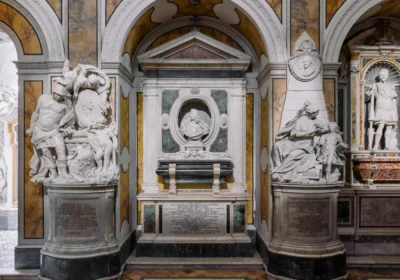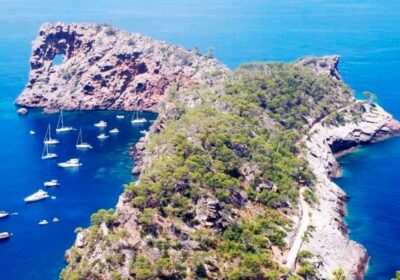Tour of the Phlegrean Fields:
Campi Phlegrei or Blazing Fields. A legendary area that was the scene of great historical events of the Roman Empire – intrigues for power, orgies and banquets to which Caesars indulged in excess.
The Phlegrean Fields (“burning fields” from the Greek phlegreios) is a large volcanic caldera in the Italian region of Campania, located on the western outskirts of the city of Naples. It is one of the most dangerous volcanoes on Earth.
A few kilometres of coastline here mix legends with ancient history, and natural beauty with unusual volcanic phenomena. Snorkelling enthusiasts will love the secluded coves, reef, wave-rounded cliffs and life-rich sea. Gastronomic travellers won’t be disappointed either: there are several routes dedicated to seafood and local wines with an ancient pedigree.
Pozzuoli is the largest settlement in the Flegrès Fields. The town preserves several monuments from the ancient Roman era. Pozzuoli was once second only to Rome in terms of trade and population, as evidenced by the ruins of two amphitheatres.
The Rione Terra district – this ancient district of Pozzuoli is visible from any point of the Flegrei Fields, as it is located on an elevated position. A preserved fragment of Roman pavement has been discovered under the cathedral at a depth of about three metres.
The Flavia Amphitheatre was built during the reign of Emperor Nero. It is the third largest in Italy: Some elements of the amphitheatre are perfectly preserved because they were covered with volcanic ash.
The Temple of Serapis (Macellum) – in antiquity, the temple building was used as a terma, so it is not quite right to call it a temple. During archaeological excavations in 1750, a statue of the Egyptian god Serapis was discovered in it, so the name “Serapis Temple” stuck.
Duomo and Temple of Augustus – the cathedral in Pozzuoli was built on the site of a much older temple, which is now called “Temple of Augustus”.
Volcano Solfatara – has an oval-shaped crater (770-580 m), formed about 4000 years ago. Several of its fumaroles constantly emit hot steam. Its last eruption was in 1198. Bocca Grande is the largest fumarole in Solfatara. It emits a column of superheated steam at 160 °C.
Stufe Antique are two brick caves used as thermae. They are called “Purgatorio” and “Inferno” (“Purgatorio” and “Inferno” respectively) because of the temperature difference. Nowadays as thermae they are no longer used.
Cuma Archaeological Park – The ancient Cumae are located near the northern border of the Phlegrean Fields. They were founded in the 8th century BC by a group of Greek colonists from Chalkida. An ancient Roman crypt (underground gallery), a grandiose building of thermae and an amphitheatre have also been discovered here. As well as numerous burials from the ancient Roman and Greek periods. Near Cumae is the Arco Felice, a viaduct built under Domitian that connected Pozzuoli with the road to Rome.
The Cave of Sibylla, a long gallery was discovered by archaeologist Maiuri in 1932. In it, the prophetess Sibylla received visitors to whom she foretold the future.
The Temple of Apollo – appeared on the site as early as the 6th century BC, but it was not dedicated to Apollo until the Ancient Roman era. In the central part of the temple there was a sacred room divided by two rows of columns, in the south of the temple there are two more small rooms. In the 5th century AD the temple was transformed into a Christian basilica.
The Temple of Jupiter – the largest temple of the acropolis is traditionally attributed to Jupiter. It was probably built in the late 6th century BC.
The Thermae of the Forum – the thermae were built in the centre of the city, southwest of the forum. The building of the thermae was richly decorated, as evidenced by the preserved decorative elements: marble slabs, porphyry cornices, black and white mosaics.
Lake Averno – the still water, the harsh landscape of the shores surrounded by wooded hills: this is what ancient people believed the entrance to the other world looked like (“Aeneid”, “Odyssey”). Even the name of the lake is translated from Greek as “without birds”. In the I century A.D. Emperor Augustus decided to establish a military port here, naming it Portus Julius, connecting the two lakes with the sea by means of canals. But very soon the lake became shallow, so the naval base moved to Miseno, and villas and thermae appeared on the shores of the lake.
The natural oasis of Monte Nuovo was created by the eruption of 1538, when a hill was formed around the crater (between Lake Lucrino and Arco Felice). The views from here are panoramic and it is quite possible to climb to the top on foot. From the top you can see views from Posillipo to the Gulf of Pozzuoli. If you walk round the edge of the crater, you can see Lakes Lucrino and Averno with the islands of Procida and Ischia in the distance.

















